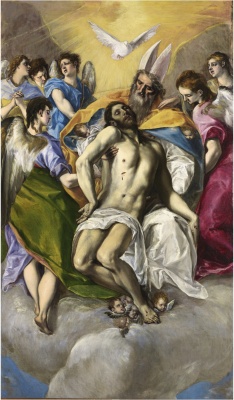Descripción de la Exposición
Antonio Obá develops his body of work through a road linking colonial Brazil and contemporary Brazil. Also, he walks on this road from the moment he begins to understand the black body and the black individual in the construction of history. This understanding came at the beginning of his relationship with painting, in a way that Brazilian Baroque reveals itself, and thus opens up an infinity of relationships in the artist's work, which demands a look at the past.
In colonial Brazil, the influence of an aftereffect from medieval exteriorism would not be so specifically Portuguese, but European Norse and impregnated with magic, that would suffering Europe the conflict of Catholicism against the reformer but would persist for a long time in the colonies. In Minas Gerais, mainly, and in the northeast and center-west of the country, religious practices such as processions, festivals and rituals would find fertile ground for its dissemination, combined with the baroque pomp that the richness of the extraction of minerals could propitiate. The production at that time in a cultural sense is the opulent worship of the baroque temples, the monumentality of the altars, tragic expressiveness of the images, the elegance of the details and the surrealities of the gesture. All this aesthetic construction of the Catholic faith in Brazil triggers a different relationship with the ethics of the church as a political force for the maintenance of the slave system and, consequently, of control of major's country population: black people.
Obá explores the implications of the Catholic black body and from this begins to move towards a study of objects and monotypes, which in their allegorical character, propose figures of bodies that are buried. This way is indicating their primitive forms: the fossil of man. The exploitation of erased memory takes place as a kind of excavation, soon the artist moves away from the painting and begins to look for the origin of the black man away from the Catholic faith and all its aesthetic implications.

Exposición. 18 feb de 2025 - 15 jun de 2025 / Museo Nacional del Prado / Madrid, España

Formación. 01 oct de 2024 - 04 abr de 2025 / PHotoEspaña / Madrid, España